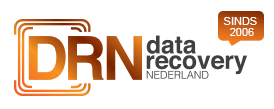Head Damage
Read and write head damage is a common issue with hard drives that can lead to data loss. This damage occurs when the heads, responsible for reading and writing data on the hard drive's magnetic platters, become damaged or malfunction. Various causes, such as physical shocks, wear over time, or manufacturing defects, can lead to this damage.
Ticking Sounds
A ticking sound is one of the most recognizable signs of a faulty read and write head on a hard drive. In 90% of cases, this noise indicates a problem with the heads.
Sector Damage





When a read head fails, it can lose control and come into physical contact with the platters. This contact can cause catastrophic damage, including scratches on the platter, known as sector damage.
How We Recover Data from a Drive with Damaged Read and Write Heads
The recovery process for a hard drive with read and write head damage is complex and requires specialized knowledge and equipment.
Step 1:
The first step involves securing the hard drive in a Class 100 Cleanroom, where the air is purified of dust particles that could harm an exposed hard drive. Next, the damaged read and write head must be carefully removed without causing further damage to the platters.
Step 2:
The next step is to find an identical, functioning read and write head from a matching hard drive. This replacement head must have the exact same model and specifications to ensure compatibility with the platters. After replacing the head, the hard drive is reassembled and connected to a specialized diagnostic device that can read the sectors.
Step 3:
Once a new, functioning read head is successfully installed, the precise process of reading the sectors one by one begins. This crucial phase involves carefully reading each sector to try to recover as much data as possible. After reading the sectors, the next step is to restore the filesystem. This filesystem organizes the data on the disk, and without a functioning filesystem, the files are not accessible. Restoring the filesystem is often a complex task that requires thorough analysis and specific software tools. Only after the filesystem is restored can access to the recovered data be obtained. The need for this extensive intervention often arises from damage when the read head fails. Normally, the read head hovers a tiny distance above the platters, driven by a thin layer of air created by the spinning of the disks. This allows the heads to read and write data via a magnetic field without making physical contact with the platters. However, when a read head malfunctions, it can lose this control and come into physical contact with the platters, causing catastrophic damage, including scratches known as sector damage. Such damage not only reduces the likelihood of data recovery but can also lead to permanent data loss.
Therefore, the expertise of our specialists at Data Recovery Nederland is invaluable. We possess the in-depth knowledge and specialized equipment necessary to carefully handle these delicate components. This enables us to offer the best chance of successful data recovery, despite the complex challenges that physical damage presents.

.png) 0031 (0) 413 270 314
0031 (0) 413 270 314 

.png) Free diagnosis
Free diagnosis